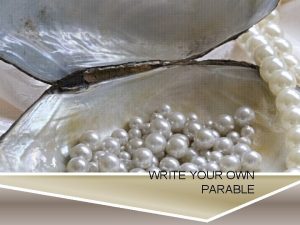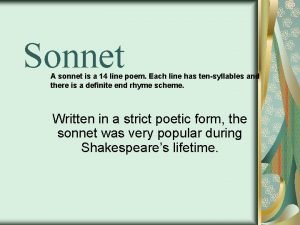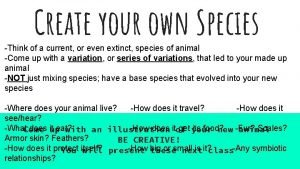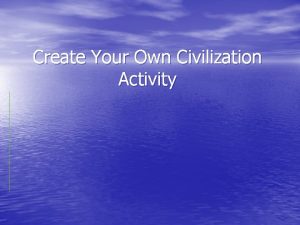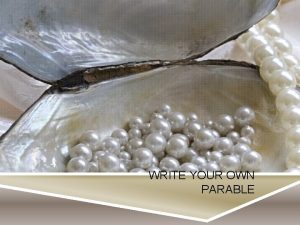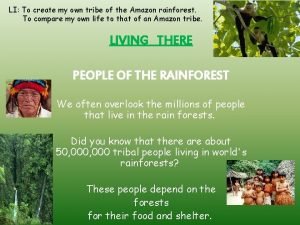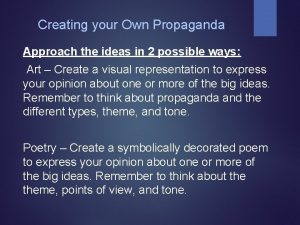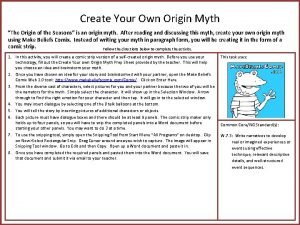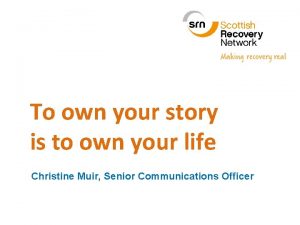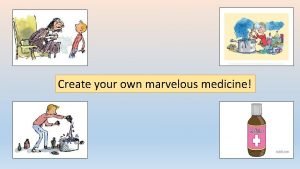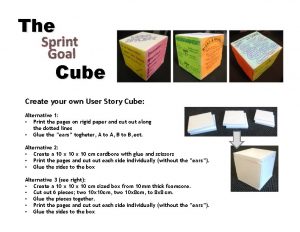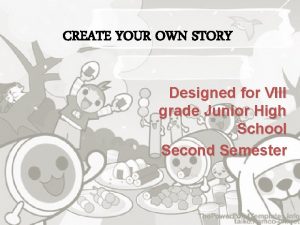This weeks lesson create your own story and










- Slides: 10

This weeks lesson- create your own story and submit it to the Capel’s creative writing competition.

Objectives • Think about story characters, settings, events and endings. • Plan and write your own story.

Settings for stories What is a setting? A setting is where a story takes place. Look at the pictures below for some ideas.

Characters…… Two or three characters are usually enough for a short story. Here's how to make the characters sound real: Give them suitable names. For example: Astronauts: Commander Ben Lewis, Assistant Commander Buzz Owens, Captain Tilly Jones Don't just use your friend's names in a story! Describe what they look like and how they move. For example: A wizened old man shuffling about the house in slippers. A giant, hairy, orange caterpillar creeping slowly along. A ten year old girl, rather small for her age, skipped merrily along the street, her long fair hair flying in the wind. Try to show they feel using adjectives and adverbs, for example: tired, excitedly, grateful, angrily, happy, sadly, curious, worriedly, relieved, nervously

Writing a good story These question words are important when writing stories. who, what, how, where, when, and why The tiny bird hopped quickly across the garden, picked up the bread, and immediately flew off to a safe place to eat it.

Use these ways to improve your writing! • Alliteration (words starting with the same letter) - e. g. dark, dank, dreary forest; crowded, cobbled streets. • Rhyme - e. g. hustle and bustle; a rumbling and a tumbling. • Onomatopoeia (words that sound like thing they describe)- e. g. jingling, jangling, tinkling coins. • Similes compare one thing to another and are introduced by the words 'like' or 'as', e. g. The wet mud was sticky like fudge cake. • Metaphors compare one thing with another, but are not introduced by 'like' or 'as', e. g. The wet mud was sticky fudge cake. • Similes • The moon hung in the sky like it was on an invisible thread. • The storm was as violent as a ranting bull.

What should I include in a good story? Events • An interesting story will contain several events. • • A strong exciting plot has an unexpected event, a crisis, or a problem, which needs to be sorted out by the end of a story. Stories can contain more than one problem. Plans could go wrong: There could be an accident. Someone or something could get lost. A machine could break down. Something important could get stolen.

Story endings Explain the result of the events or show the problem was solved. (But don't end with everyone going home for tea or someone waking up to find it was all a dream - that's boring!) Endings usually bring the story round 'full circle'. For example, Start: Three scruffy pirates sat gloomily around a table in the Lord Nelson pub, staring down in to their empty beer glasses. One by one they emptied out their pockets. It seemed they had all run out of money. Ending: The pirate gang made their way down the port to their favourite pub to celebrate their success. They had earned enough money now to buy a year's worth of beer - and have change.

Now its time to make your own story. You can use this story board below to help you plan your story. Opening? Setting? Characters? Problem…. How it is solved… Ending….

Once you have written your story you can submit it into the competition. Proof read your work for punctuation, spelling and grammar. Follow the instructions below.


